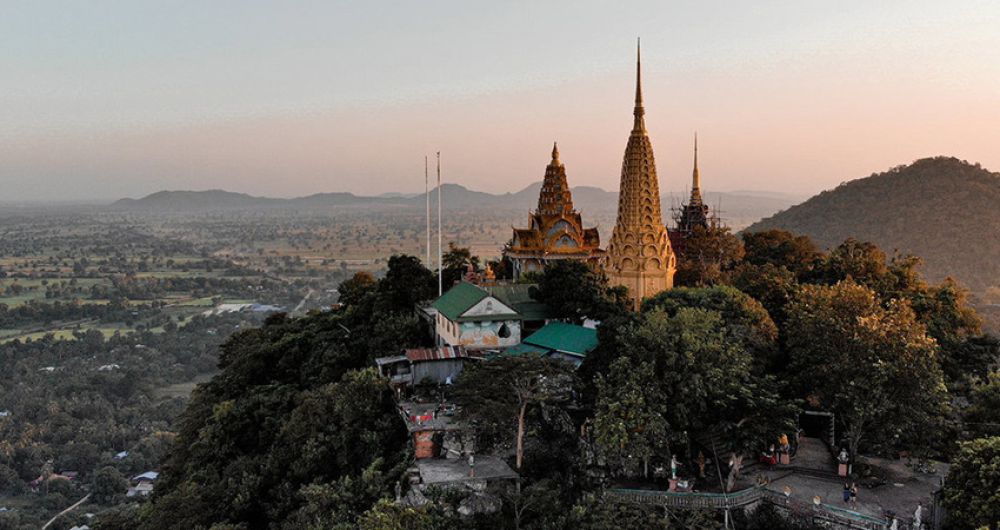

Phnom Sampeau, located in the Battambang province of Cambodia, is a site of stunning beauty and tragic history that has born witness to the various eras of Cambodian history, from the Angkorian period to the dark times under the Khmer Rouge regime. Tourism in Battambang, and particularly at Phnom Sampeau, has grown in recent years, offering travelers a glimpse into Cambodia's rich cultural tapestry and somber past.
While tourism in Cambodia primarily focused on the Angkor Wat complex in Siem Reap, Phnom Sampeau slowly garnered attention due to its dramatic landscape and significant cultural landmarks. The hill is steeped in legend, with various pagodas and shrines dating back centuries. Initially, tourism in the region was somewhat limited due to the lack of infrastructure and the remote nature of such historical sites.
In the 1970s, the ascent of the Khmer Rouge brought catastrophic changes to Cambodia, halting the development of tourism. One of the darkest remnants of this era at Phnom Sampeau is the Killing Caves, where countless people lost their lives. With the fall of the Khmer Rouge and the subsequent period of recovery, these caves became a poignant attraction, bringing in tourists interested in understanding Cambodia's turbulent history.
In recent times, the Cambodian government and various NGOs have worked to promote tourism in Battambang. Phnom Sampeau, with its blend of natural beauty and historical significance, has become a central element of this initiative. The establishment of better roads, local guides, and informational resources has made the hill more accessible to international and domestic visitors alike.
Eco-tourism and cultural tourism are on the rise, with visitors looking for authentic experiences that promote sustainability and respect for local heritage. Phnom Sampeau caters to these interests, offering opportunities to explore the landscape, visit traditional workshops, and learn about the local way of life.
Additionally, activities such as trekking to the hilltop to witness breathtaking views, exploring the historical caves, and witnessing the spectacular phenomenon of bats swarming out of the caves at dusk, have become highly popular among tourists. The Bat Cave has especially become a must-see event for visitors in the area.
While tourism growth presents economic opportunities, it also brings challenges concerning conservation and preserving the integrity of the historical sites. Local authorities and international bodies are thus grappling with finding a balance between promoting tourism and conserving the area's heritage and natural environment.
Looking ahead, the focus is on sustainable development, ensuring that Phnom Sampeau remains a vibrant and educational destination for future generations. With continued responsible management, Phnom Sampeau is set to remain one of the jewels of Battambang's burgeoning tourism landscape.